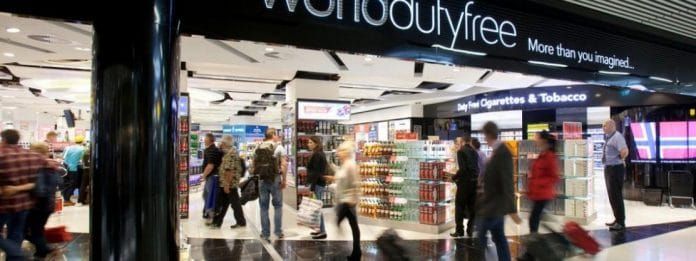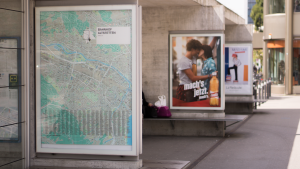
What airports can teach about how to get consumers to spend more money
What airports can teach about how to get to the gate’encourage consumers to spend more
Anyone who has spent a few hours in an airport will have noticed one thing. Whoever has been trapped in the’One of the trends in airport design in recent years has been to position green space and even open space at the airport. Airports are closed spaces in which time seems to pass slowly and which seem to be on the fringe of the city’other things.
The king of airports’incentive to spend tourists ?
These are also spaces where the only option to kill the’s boredom’and where almost everything is accepted. C’s a matter of bad luck that the sandwiches in the only cafeteria in your area are sold out (even though many hours of service and many passengers who will pass through the area are still ahead) and it is accepted with resignation that all the prices of things are particularly high.
To this end’Add to that the fact that in recent years the busiest airports have become more and more like shopping malls. Think of Barajas T4, the’Madrid Airport. Once the control of’access crossed, the traveler will find stores and’Anyone who has been trapped in the airport’s shopping mall to waste time buying all sorts of things.
While waiting for a flight, or while’there is time between stops, you end up buying. These are actually the same stores in the’environment, which does not’It’s not uncommon, but shopping seems almost the only entertainment option.
When you do not, it seems almost impossible not to go through the stores. The design of some airports ensures that the path of consumers ends – whatever’they do – through the shopping and dining area. If you want to get to your boarding gate, you need to get to the airport’The advantage of the play-off system is that it allows you to see the entire team that loses the mini-series of games’commercial option.
In recent times, airports and their design have begun to take more and more into account the passengers as consumers, as well as the elements that mark their experience and make them more comfortable (and consume more). One of the trends in airport space design in recent years has been the positioning of green space and even open space at the airport’The first weeks and months are always important, of course, as they play a role in the airport’s interior (even if it’s not the most important)’they are in a focused and highly controlled environment).
The biophilic design boom
The paradigm of the closed box that defined airports in the past is giving way to environments that open spaces and gardens. The latest redevelopments and improvements to airports around the world have already begun to take into account the fact that’They need to make travelers feel at home’What airports can teach about how to make airports more comfortable and how greener design helps to improve perceptions.
Biophilic design, a trend in architecture and urban planning that is becoming increasingly popular’inspired by nature to create spaces, arrived in this environment. L’The Long Beach Airport in the U.S. has incorporated open gardens that allow people to explore the airport’go to the’and to give more’atmosphere that the’airport, and the’airport’Honolulu has added a circuit of Hawaiian, Japanese and Chinese gardens to this space (to reassure and relax travelers). In Singapore’s Terminal One, there is an aisle of’trees and 340 species of plants.
“The more money there is’The goal is to create an environment that does more than just wait for the world to come’The more relaxed they are, the more they will consume and the more they will spend. Quartz, responsible for the design of the’It’s an aeronautical environment for a travel agency’specialized architects, HOK.
More relaxed and consuming
This redesign work is marked by new architectural trends and also by the’rise of the concern of the’consumer experience. L’travelers’ experience s’The brand is getting better in these environments and is becoming much more positive. But, of course, these are not the only causes: if airports start incorporating trees and green spaces, it’s not just about the’is because’They help travelers relax and spend more money’money.
The airports s’The company expects consumers not only to spend money, but also to enjoy the benefits of the company’s products’money because’they n’have nothing better to do, but also because’they are in a space that invites them to do so.
The airports include recently all the possible tools to relax the consumers because’they know that the more relaxed they are, the more they will consume and spend. The trend of spending is related to stress levels, as the’experts have shown. The more money there is’The more information available, the more money there is’used items that generate peace of mind’(in addition to plants, it is also a way to create a sense of place’The fact that duty-free shops are the first thing you walk through is also the case for the’The more they know about the use of wood, for example), the more they will spend’state of the art’mind will be conducive to the’purchase.
Your usual tours
This if’adds to the usual tricks that airports use to make us spend more and to push us to consumption. The fact that duty-free stores are the first thing you walk through is also the case for the’is not a coincidence, but a way to enjoy the’atmosphere. After passing through the security checkpoint – a negative experience – the subconscious may think that’it deserves a reward: the reward will be shopping.
Airports also use a design that encourages consumption, as do stores like Ikea. C’is why you have to go through the stores to get to the gate and organize things like a coil. In this way you see things more clearly and consume more.
C’is also a consumer decision that turns to the left.
As the majority of travelers are right-handed, it is avoided that the things are of majority form in the side that is charged to throw by the suitcase. C’is easier to take things off the shelves.

